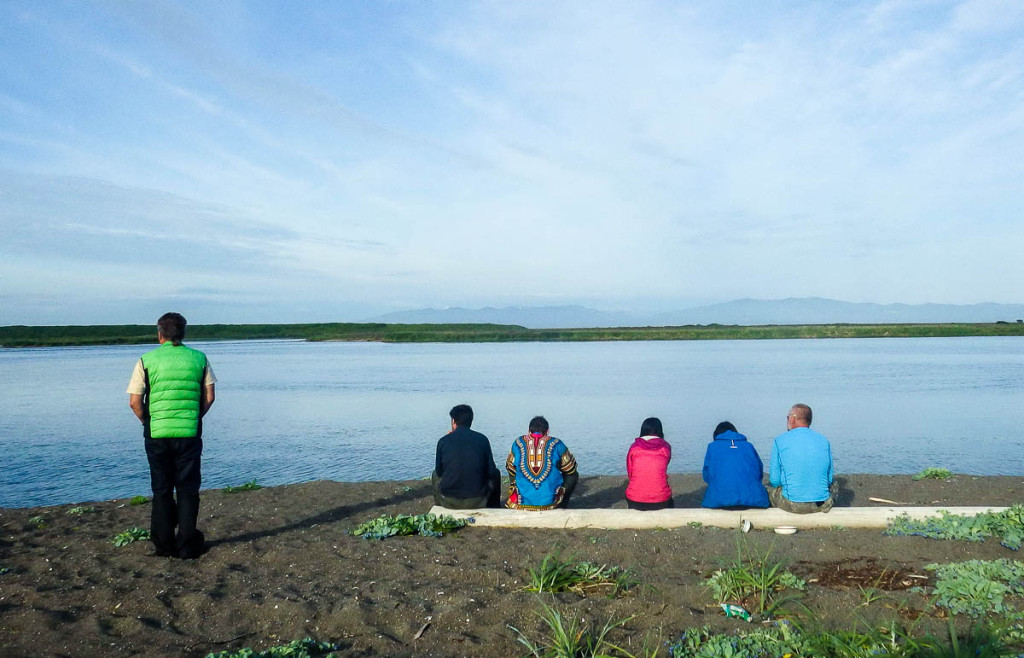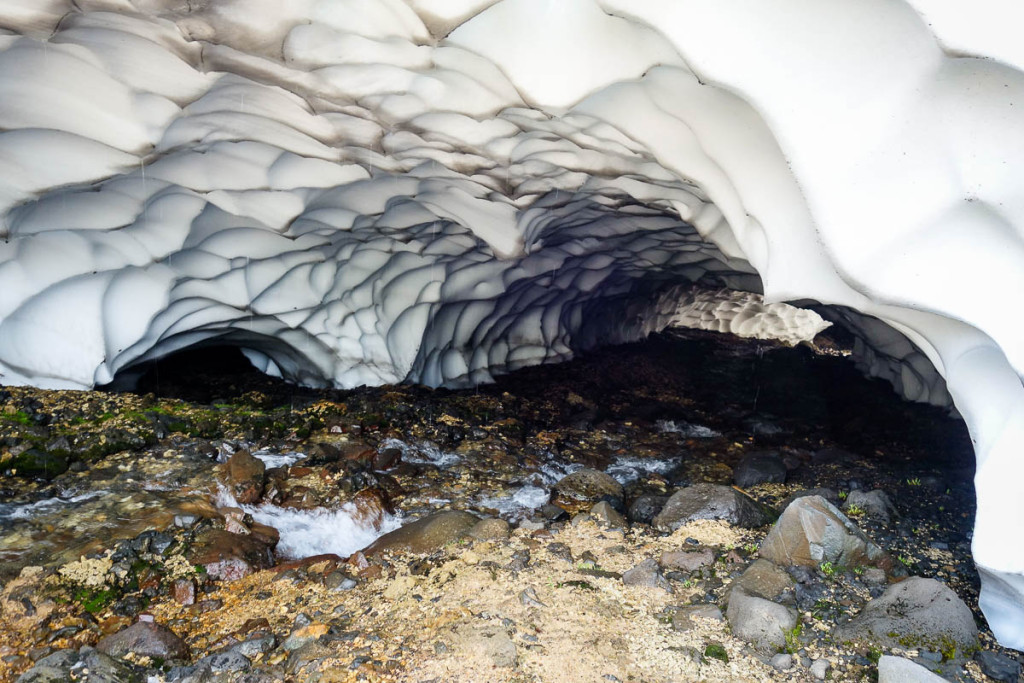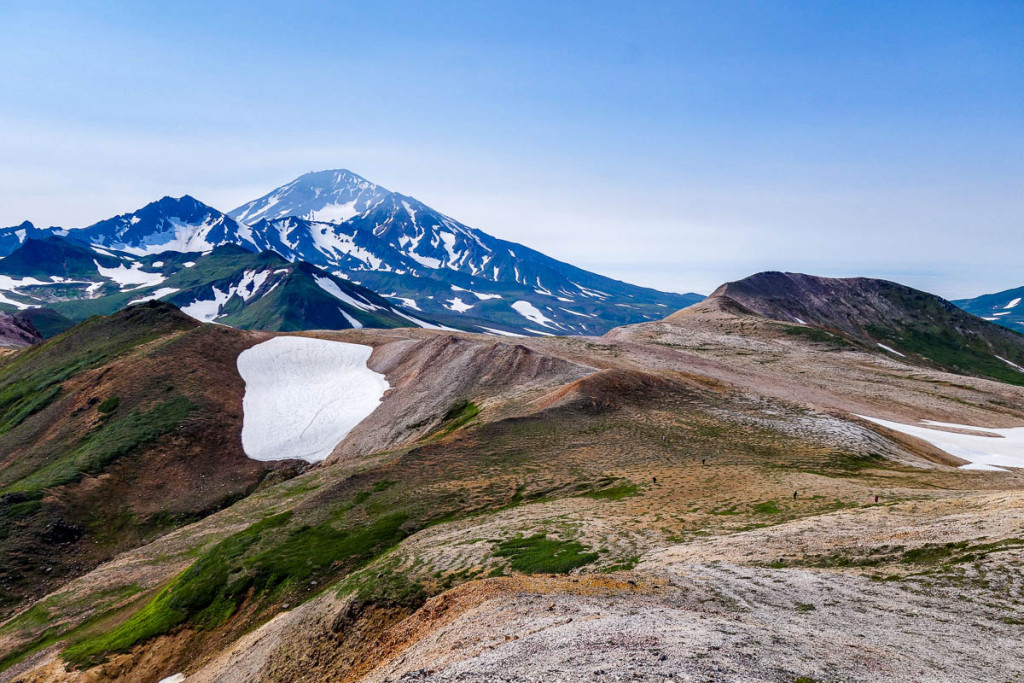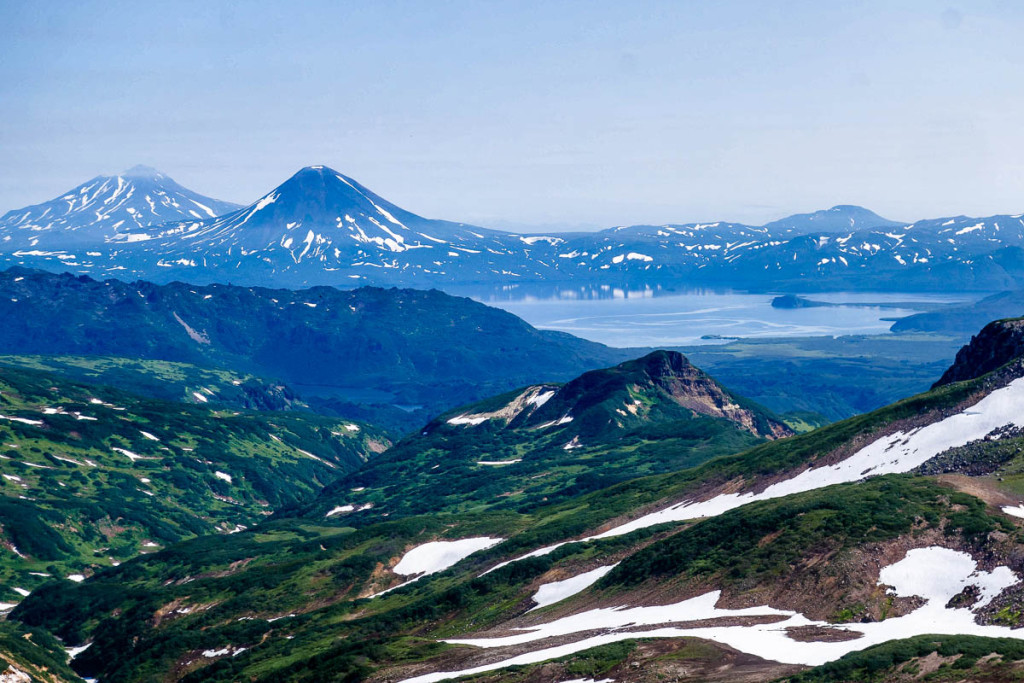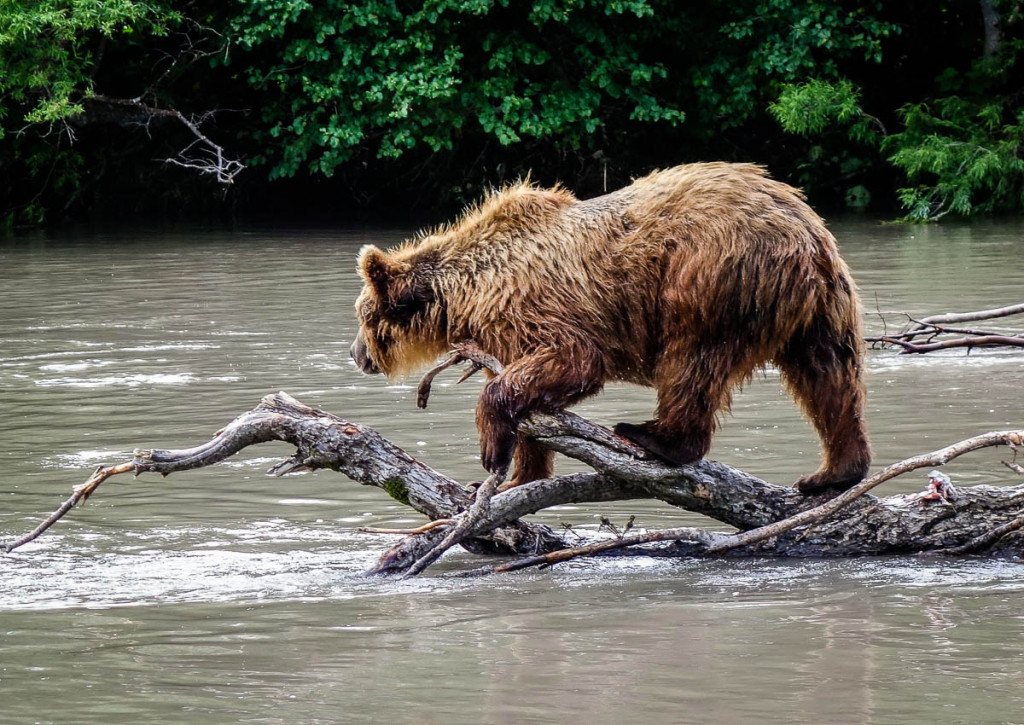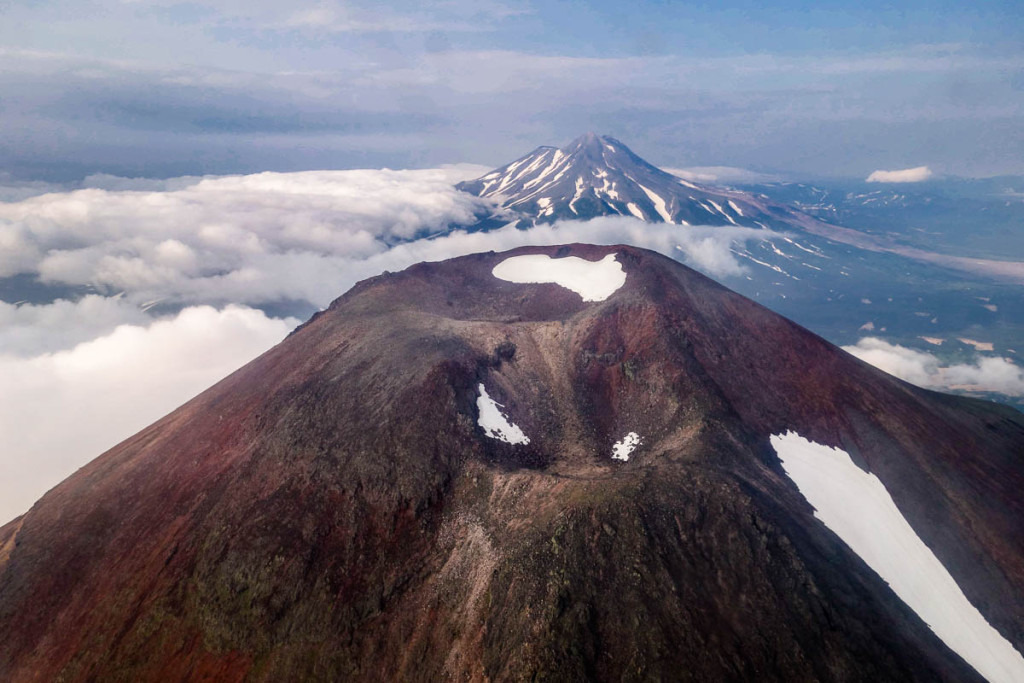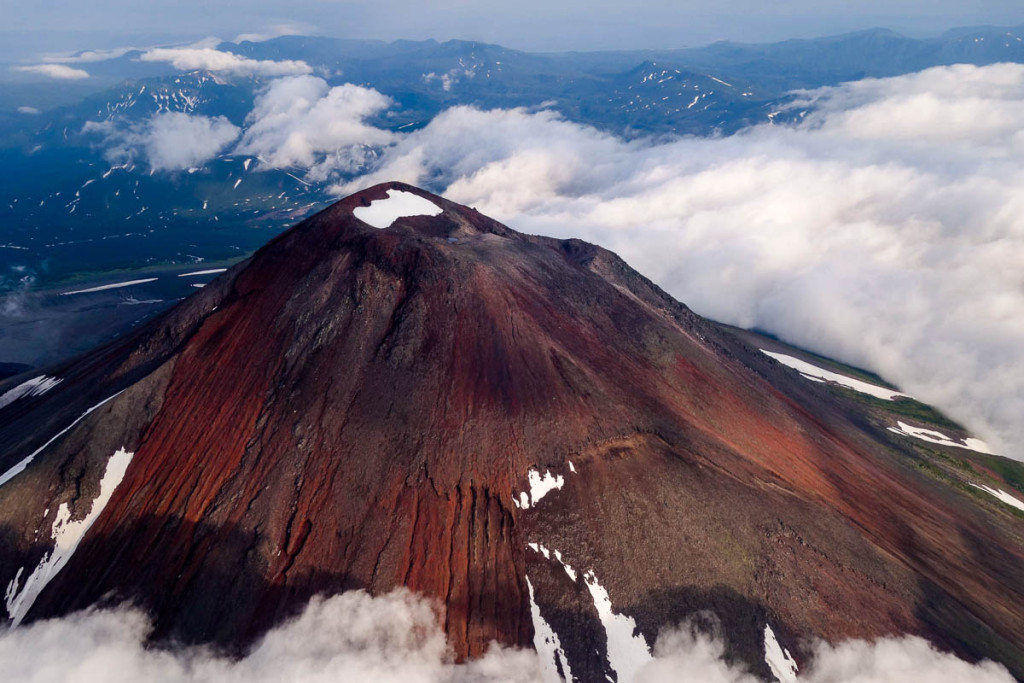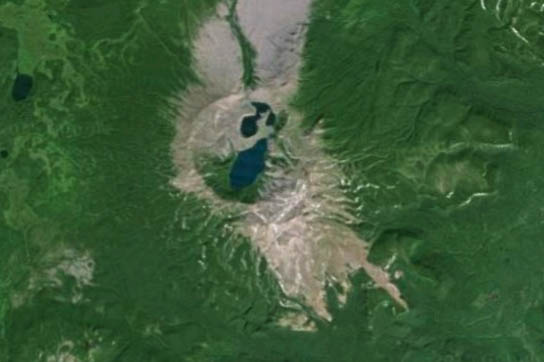There’s a small remote village in Kamchatka called Pauzhetka – to the far south of the peninsula. It’s so small and remote, Google Maps shows, er, nothing, where in fact lies this settlement. It just didn’t get round to it I guess.
Perhaps that’s understandable: the village (situated between the Sea of Okhotsk and Kurile Lake) is surrounded on all sides by volcanoes. Pauzhetka is so unremarkable, it doesn’t even have a Wikipedia page dedicated to it. (Hmmm, maybe one just needs writing then; maybe even a grandiose Wiki affair with photos, facts and figures, history and other details? Well why not? Any volunteers? Internet enthusiasts to the rescue of online Pauzhetka!)
We were told that the name Pauzhetka comes from the former name – Pauzha – of a local river. I wonder, was that the Itelmen name? Well, anyway, that river is now called Pauzhetka too. Just so no one confuses the two.
I like how Pauzhetka sounds. I imagine a ‘pause’ when thinking of this place. As if life is put on pauze when folks come here, as it’s so out of the normal rhythm of life and the world. Something like that anyway.
Pauzhetka is just one of many interesting-sounding names on Kamchatka. Others include: the Goreliy (burnt) volcano, the Dvugorbaya (twin-peaked) volcano, and the Falshiviy (false), and Zhirovoy (fatty) streams!
// Sure, pioneers often gave bizarre names to the peaks, valleys, bays and other places they discovered. For example, in South Africa there’s a False Bay, which has a most interesting tale behind it. However, today’s post is about Kamchatkan names only.
There are more odd names, particularly of volcanoes. Examples: Mutniy (muddy), Beliy (white), Ploskiy (flat), Shish (the ‘bird‘:), Ostriy (sharp), and Spokoyniy (calm).
But now – back to the main topic: Pauzhetka. What else is there to Pauzhetka? Three main things (besides volcanism plain and simple):
– A geothermal power plant;
– Fruit and veg;
– Much natural beauty.
The geothermal power plant produces not only gigawatts of free-of-charge thermal electricity for Kamchatkans, but also lots and lots of boiling water for the valley below (also free), which the locals naturally put to good use with pleasure.
The hot water might also have a hand in making the fruit and vegetables grown in the many greenhouses in and around the village as tasty as we discovered them to be. And not only the obvious tomatoes, cabbages and potatoes, but also watermelons! Some even claim that pineapples and papayas are grown, though we didn’t catch a glimpse of any such exotic fruit – they must be tucked away deep inside the greenhouse jungle.
Here’s the view of the Pauzhetka area from one of the mountains next to it (the village itself isn’t visible, just like on Google:).
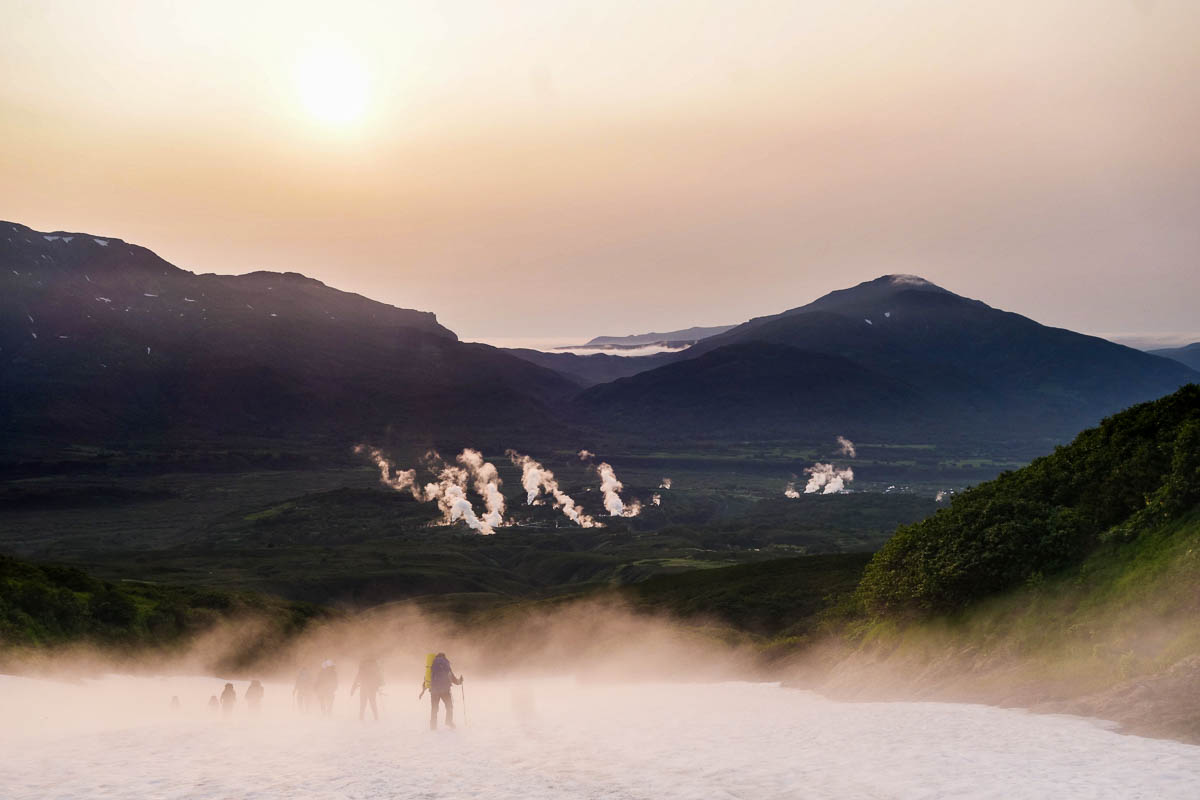
Read on: not only a beautiful place, but very tasty too one too!…
